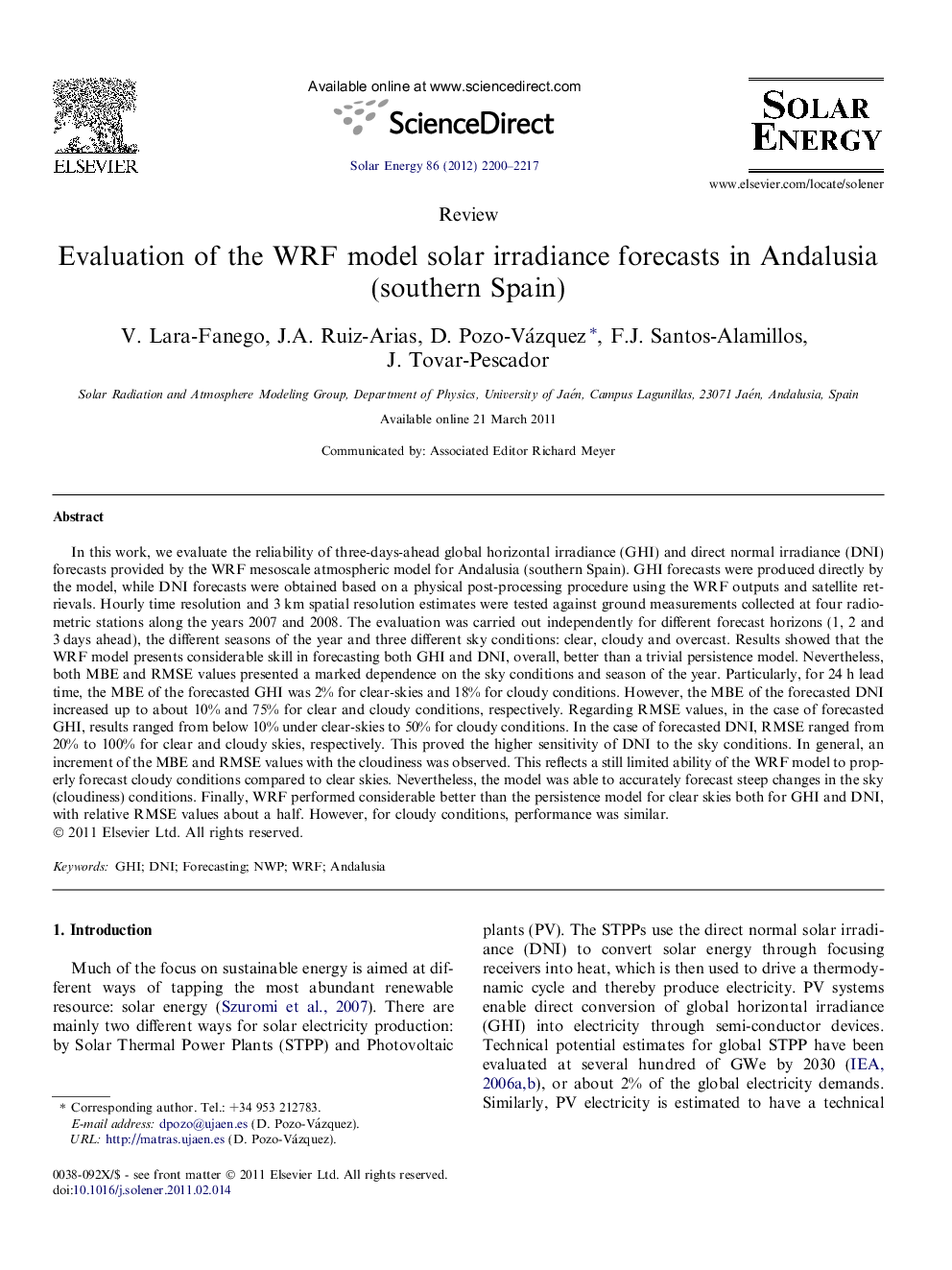| کد مقاله | کد نشریه | سال انتشار | مقاله انگلیسی | نسخه تمام متن |
|---|---|---|---|---|
| 1550639 | 998101 | 2012 | 18 صفحه PDF | دانلود رایگان |

In this work, we evaluate the reliability of three-days-ahead global horizontal irradiance (GHI) and direct normal irradiance (DNI) forecasts provided by the WRF mesoscale atmospheric model for Andalusia (southern Spain). GHI forecasts were produced directly by the model, while DNI forecasts were obtained based on a physical post-processing procedure using the WRF outputs and satellite retrievals. Hourly time resolution and 3 km spatial resolution estimates were tested against ground measurements collected at four radiometric stations along the years 2007 and 2008. The evaluation was carried out independently for different forecast horizons (1, 2 and 3 days ahead), the different seasons of the year and three different sky conditions: clear, cloudy and overcast. Results showed that the WRF model presents considerable skill in forecasting both GHI and DNI, overall, better than a trivial persistence model. Nevertheless, both MBE and RMSE values presented a marked dependence on the sky conditions and season of the year. Particularly, for 24 h lead time, the MBE of the forecasted GHI was 2% for clear-skies and 18% for cloudy conditions. However, the MBE of the forecasted DNI increased up to about 10% and 75% for clear and cloudy conditions, respectively. Regarding RMSE values, in the case of forecasted GHI, results ranged from below 10% under clear-skies to 50% for cloudy conditions. In the case of forecasted DNI, RMSE ranged from 20% to 100% for clear and cloudy skies, respectively. This proved the higher sensitivity of DNI to the sky conditions. In general, an increment of the MBE and RMSE values with the cloudiness was observed. This reflects a still limited ability of the WRF model to properly forecast cloudy conditions compared to clear skies. Nevertheless, the model was able to accurately forecast steep changes in the sky (cloudiness) conditions. Finally, WRF performed considerable better than the persistence model for clear skies both for GHI and DNI, with relative RMSE values about a half. However, for cloudy conditions, performance was similar.
Journal: Solar Energy - Volume 86, Issue 8, August 2012, Pages 2200–2217